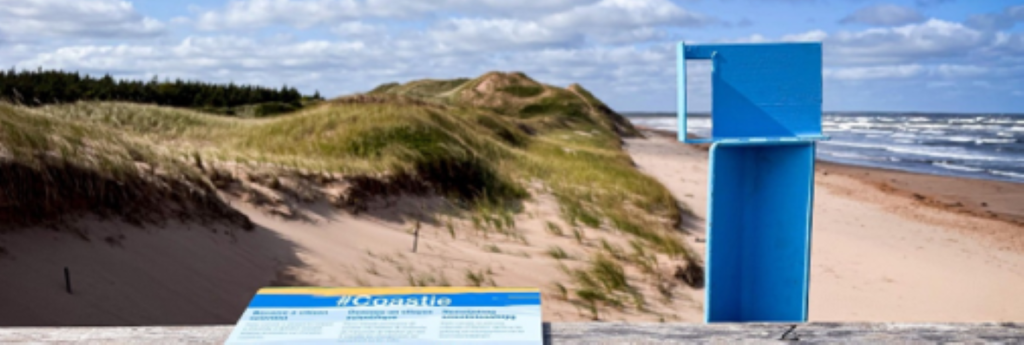When you take a photo of yourself, that’s a selfie. When you take a photo of the coast, that’s a coastie! Parks Canada is launching the “Coastie Initiative,” a new citizen science program in five Parks Canada administered places. Pictures taken by visitors at these locations will help parks officials monitor coastal change over time.
Cell phone cradles will be installed in specific locations at the coastal sites this year. To participate in the Coastie Initiative, visitors will be invited to either scan the QR code at the Coastie site, submit their photos to coastiecanada.ca, or share their photos on social media using the #Coastie hashtag. Instructions on how to share photos will be on site at each Coastie research location.
Participating parks include:
• Fundy National Park: Located on New Brunswick’s Atlantic Coast, the park encompasses 20 km of dramatic shoreline along the Bay of Fundy. For visitors, this means exceptional sightseeing and unforgettable kayaking, and a unique chance to explore the sea floor at low tide.
• Sable Island National Park Reserve: One of Canada’s furthest offshore islands, located in the Atlantic Ocean, this crescent shaped Island of rolling sand dunes is home to a wild horse population, the world’s largest breeding colony of grey seals, and species that are found here and nowhere else on earth. Together with researchers and partners, Parks Canada is actively engaged in work that will help them better understand the impacts of climate change on Sable Island while protecting ecosystems and contributing to the recovery of species at risk.
• Kouchibouguac National Park: Spanning an area of 238 sq. m., this representative example of the Maritime Plain natural region along New Brunswick’s South-Eastern shore is comprised of eight habitats, its most dynamic being its coastal habitat along the Northumberland Straight where 25 km. of barrier islands shelter the park’s warm estuaries, salt marshes, brackish rivers, bogs and Acadian forest. In the spring and summer months, Canada’s largest Common Tern colony and the endangered Piping plover nest along the park’s sand dunes.
• Point Pelee National Park: Comprising the southernmost tip of mainland Canada in Ontario, the 10-km-long triangular sand spit jutting into Lake Erie supports incredible natural diversity, including over 60 species at risk and critical habitat they depend on, and protects a large marsh as well as Carolinian forest and savannah habitats. The park’s 20 km. of sandy beach is facing accelerated rates of erosion and Parks Canada is actively engaged in regional collaborative work to find sustainable solutions to the threat of coastal erosion on the peninsula.
• Prince Edward Island National Park: One of the smallest national parks in Canada, encompassing an area of approximately 23.84 sq. km., the park extends along the north shore of Prince Edward Island for approximately 40 km. between Cavendish and the Greenwich Peninsula. In any given year, the amount of coastal erosion along the north shore of PEI National Park can be between 0.6m to 3m.
Photos taken for the initiative will be analyzed and the data made available to the University of Windsor, which will use it to track coastal changes, such as shoreline retreat, dune erosion and recovery, storm surge and ice cover, vegetation structure, beach use, and rip current locations.
The program will launch in Prince Edward Island National Park, Fundy National Park, Kouchibouguac National Park, Point Pelee National Park, and Sable Island National Park Reserve. Between one and three Coastie stands will be installed at each site. In 2022, more national parks will join the initiative.
The Coastie Initiative was a winning project on the crowdsourced Innovation Competition for Parks Canada employees. The Innovation Competition was a contest to promote innovative solutions to natural resource conservation challenges. Employees from across the Agency had the opportunity to propose projects directly linked to one of Parks Canada’s conservation priorities.
“National parks are gateways to discovering, learning about, and connecting with nature and what better way to connect with nature than to participate in citizen science research,” says Parks Canada president and CEO Ron Hallman. “The Coastie Initiative is a fun and easy way for visitors to get involved in Parks Canada’s work and to help us better understand the complex and changing coastal ecosystems. I encourage visitors to seek out one of our Coastie locations, take a Coastie and share it with us.”

